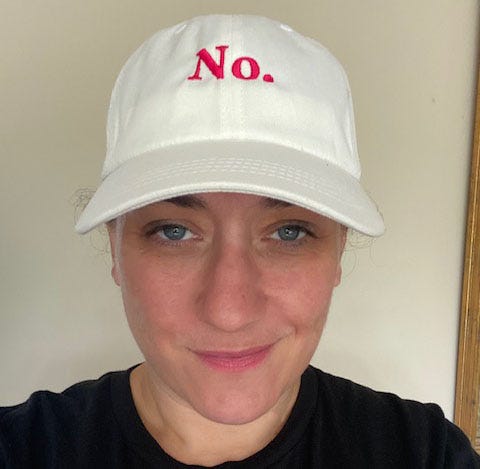You've read it a hundred times in articles about how to create the ever elusive work/life balance. And during the early months of the pandemic, when people working remotely and still trying to stay alive were really struggling with burnout and mental health, you probably heard it much more than usual. You must define boundaries for your mental health.
I tell the teams and coaching clients I work with: only you can decide what you are and are not willing to do. So you have to take time to make sure you know what those things are. If you don't want to do it, don't. And make your boundaries clear to your manager and peers.
When you answer that 9pm email from your boss or a colleague right away, even though you just got back from a late workout and it could probably have waited until 9am, you're showing that you are willing to work whenever and wherever. Maybe you feel like you have to do that to get ahead. And at some companies maybe you do.
But there's more to it. Saying no can actually make you more successful in your career.
Stick with me here, because it's actually pretty logical.
Your time is limited. Not all tasks are equally important — or valuable. To be successful, you need to manage your time so you can focus on your biggest priorities. And then you can figure out where to draw the line on what you cannot do.
At the heart of this idea is the economics concept of opportunity cost. “Opportunity costs represent the potential benefits an individual, investor, or business misses out on when choosing one alternative over another.” (Investopedia) If you try to do everything that gets thrown at you, you will constantly be missing out on some other opportunity that might be more important.
There were many times in my career where my to-do list was endless. I remember going to my manager and saying, “Here's a list of 25 things on my priority list. I've ordered them by which ones I think are the most important for my role and the business right now. Does this look right to you? Is there anything I can take off this list entirely?”
A good manager will take one look at your priority list and be able to work with you. And a list showing everything on your radar will also help your manager see the breadth of what's on your plate and can help her prioritize, delegate or spread out the work — and eliminate unnecessary tasks. If your list is always that long and doesn't let up, it can help demonstrate a need for increased resources or identify gaps in the current staffing of your department or division.
So how do you prioritize so you know where to draw the line?
- Review business goals. Make sure you understand the current goals for your role and the products or projects you are working on. Then narrow them down to what's most important for the next month or quarter. This list needs to be small and high-level.
- Put your personal goals in the mix. Think about your goals for your own professional development and make sure you're setting aside some time to work towards those. Is there something new you want to learn? A skill you want to practice?
- Review & analyze. Look at how you've been spending your time (track for a week if you're not sure). How much of that time is spent supporting your top 3 goals? How much of it has nothing to do with your goals?
- Ruthlessly prioritize. Be honest with yourself about where your time is best spent. If you're spending most of your time in meetings, but those meetings aren't aligned with your goals, stop going to those meetings. If you own those meetings, think hard about why they're on the calendar in the first place.
Maura Charles is the founder of Keep it Human. As a Product Leadership Coach and Consultant, she is on a mission to help teams and organizations embrace human skills like communication and emotional intelligence in their ways of working.
She brings 25 years of experience as an editor, product manager, and digital business leader to bear on the challenges of building human-centered high-performing tech teams.
If you'd like to develop more human business and tech teams that hum together to drive results, check out Keep it Human and follow Maura Charles on LinkedIn.

